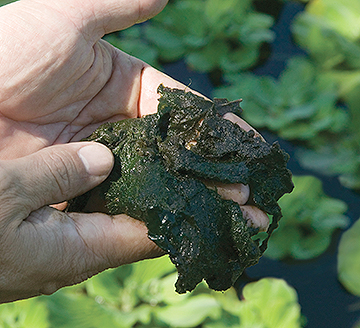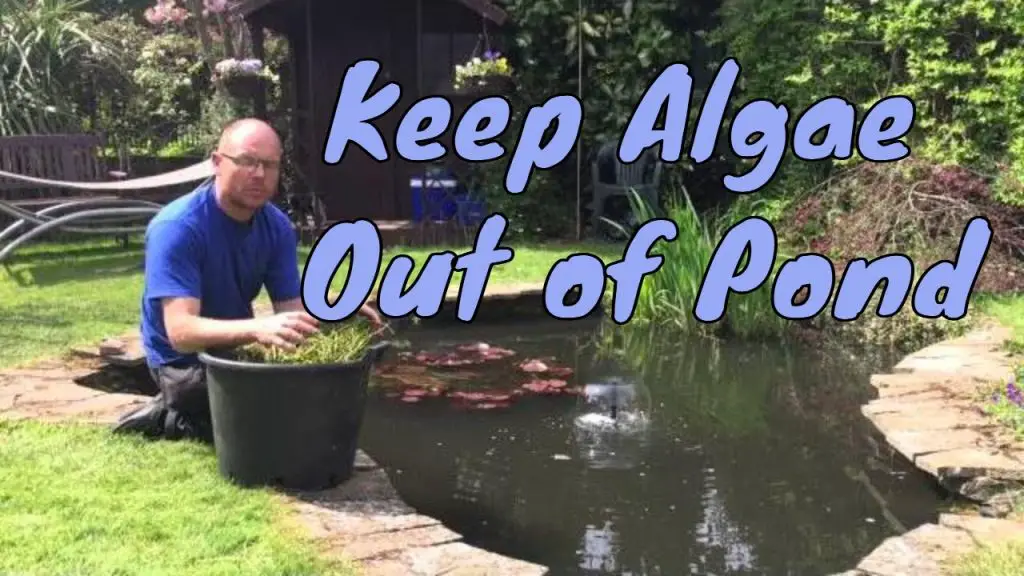Having a pond in your backyard can be a beautiful addition to your landscape. However, dealing with algae growth can be a common challenge for pond owners. Algae can turn your crystal-clear pond water into a murky green mess, affecting the overall aesthetics and health of your pond ecosystem. In this article, we will explore effective strategies to stop algae in a pond and maintain a clean and clear water feature.

Credit: www.aquascapeinc.com
Understanding Algae in Ponds
Algae are simple aquatic plants that thrive in water environments with an abundance of nutrients and sunlight. In ponds, algae growth can be triggered by various factors such as excess nutrients, sunlight exposure, and stagnant water. There are different types of algae that can plague your pond, including green algae, blue-green algae, and string algae.
Effective Strategies to Stop Algae Growth
1. Provide Sufficient Aeration: Installing a pond aerator can help increase oxygen levels in the water, which can inhibit algae growth. Aeration also promotes beneficial bacteria that compete with algae for nutrients, helping to maintain a healthy pond ecosystem.
2. Add Floating Plants: Floating plants like water lilies and lotus can provide shade and competition for algae, limiting their access to sunlight. These plants also absorb excess nutrients, reducing the available food source for algae.
3. Use Barley Straw: Barley straw is a natural and effective way to control algae in ponds. As the straw decomposes, it releases compounds that inhibit algae growth. Simply place barley straw bundles in your pond to reap the benefits.
4. Install a UV Clarifier: UV clarifiers use ultraviolet light to kill algae cells, preventing them from reproducing and causing blooms. This can be a highly effective method for controlling algae in ponds, especially green water algae.
5. Regular Maintenance: Performing regular maintenance tasks such as removing debris, decaying organic matter, and excess fish waste can help prevent nutrient buildup that fuels algae growth. Consider adding a pond skimmer or filter to aid in debris removal.
Preventive Measures to Keep Algae at Bay
1. Control Nutrient Levels: Limit the amount of nutrients entering your pond by avoiding overfeeding fish, using organic fertilizers sparingly, and preventing runoff from lawn fertilizers. Excess nutrients can fuel algae growth, so maintaining a nutrient balance is crucial.
2. Shade Your Pond: Planting trees or installing shade structures near your pond can help reduce sunlight exposure, limiting the photosynthesis process that algae depend on for growth. Providing natural shade can be an effective way to prevent algae blooms.
3. Introduce Beneficial Bacteria: Adding beneficial bacteria supplements to your pond can help break down organic matter, reducing nutrient levels that algae thrive on. These bacteria can also outcompete algae for resources, promoting a healthier pond environment.
4. Use Algae Treatments: Consider using algae treatments or algaecides as a short-term solution to control algae blooms. It is important to follow the manufacturer’s instructions carefully to avoid harming beneficial organisms in your pond.

Credit: www.tetra-fish.com
Conclusion
Algae growth can be a persistent issue in ponds, but with the right strategies and preventive measures, you can effectively stop algae and maintain a clean and clear pond. By implementing a combination of aeration, natural remedies, regular maintenance, and preventive measures, you can create a balanced ecosystem that discourages algae growth and promotes the health of your pond and its inhabitants. Remember, a little proactive care can go a long way in keeping your pond looking pristine and beautiful for years to come.





